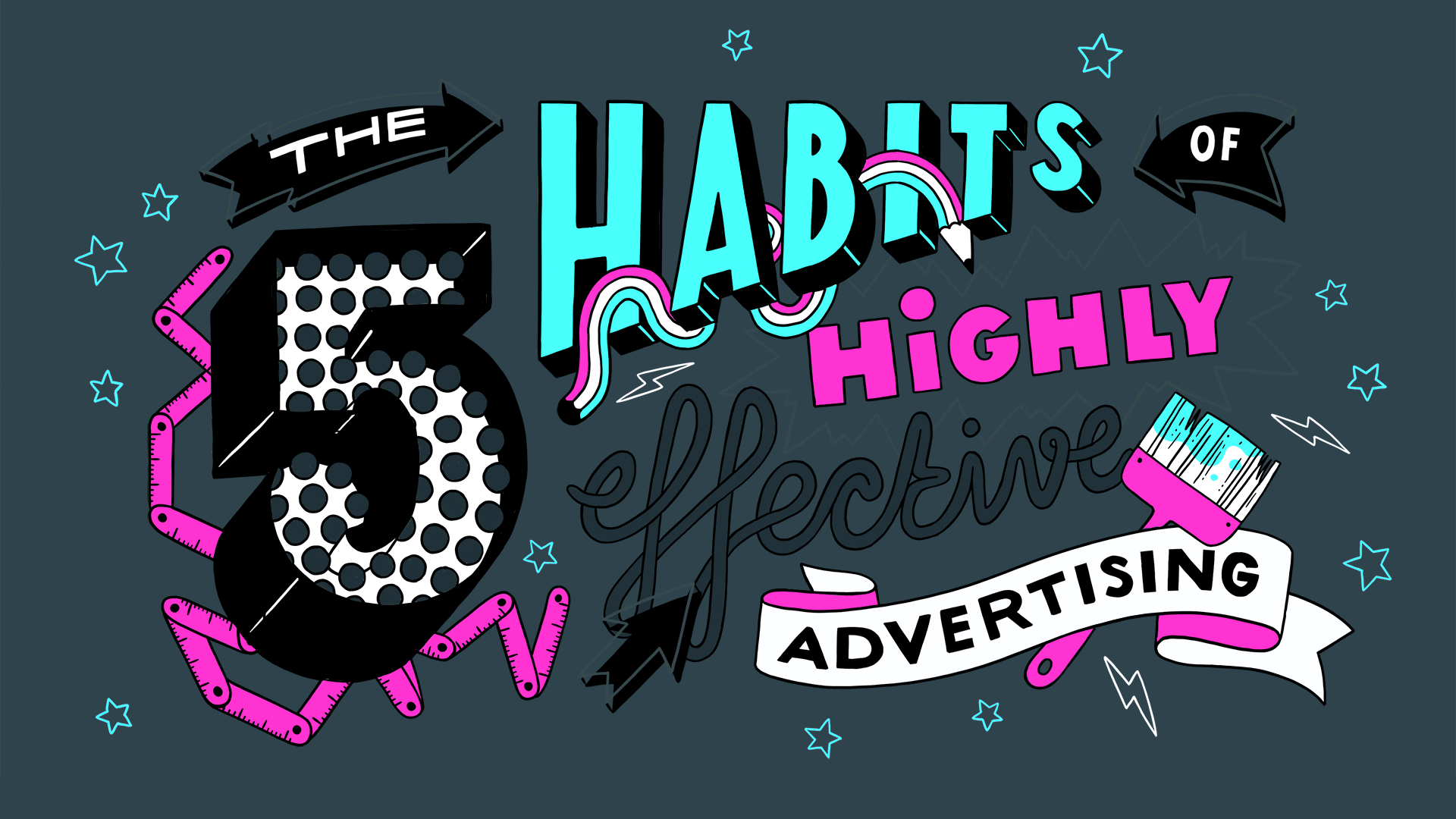
Why Creative Really Matters
Do you really know what impacts advertising campaign performance?
In this day and age when so many aspects of a program can be measured, marketers look to every variable: audience strategies, media environments, budgets, frequency and the like.
But when it comes to driving actual outcomes, one results-focused variable too often gets downplayed: creative.
Study after study has pointed to the impact creative has on ad effectiveness. Recent research from NCSolutions and Nielsen said creativity provides 47% of the total sales impact. A survey from Celtra found that 85% of U.S. adults are more likely to trust a brand with high-quality and well-designed ads.
Bottom line, creative matters. But how do you prove that?
The key to measuring creative effectiveness is to establish performance indicators that define what you’d like the creative to achieve. Two important measures are sales in the short term and contributions to brand equity in the long term. Working with Kantar, Amazon Ads recently applied this methodology in an analysis of creative effectiveness in more than 200 campaigns launched on Amazon Ads in the U.S. by grocery, automotive and hospitality companies.
To develop compelling ad creative, it all comes down to what Kantar calls the five habits of highly effective advertising. And like many habits, they need to be practiced regularly to become part of your creative muscle memory. Scroll on to see how they’ve been applied by advertisers, along with advice from Amazon Ads creative leaders.



Why Creative Really Matters
Do you really know what impacts advertising campaign performance?
In this day and age when so many aspects of a program can be measured, marketers look to every variable: audience strategies, media environments, budgets, frequency and the like.
But when it comes to driving actual outcomes, one results-focused variable too often gets downplayed: creative.
Study after study has pointed to the impact creative has on ad effectiveness. Recent research from NCSolutions and Nielsen said creativity provides 47% of the total sales impact. A survey from Celtra found that 85% of U.S. adults are more likely to trust a brand with high-quality and well-designed ads.
Bottom line, creative matters. But how do you prove that?
The key to measuring creative effectiveness is to establish performance indicators that define what you’d like the creative to achieve. Two important measures are sales in the short term and contributions to brand equity in the long term. Working with Kantar, Amazon Ads recently applied this methodology in an analysis of creative effectiveness in more than 200 campaigns launched on Amazon Ads in the U.S. by grocery, automotive and hospitality companies.
To develop compelling ad creative, it all comes down to what Kantar calls the five habits of highly effective advertising. And like many habits, they need to be practiced regularly to become part of your creative muscle memory. Scroll on to see how they’ve been applied by advertisers, along with advice from Amazon Ads creative leaders.
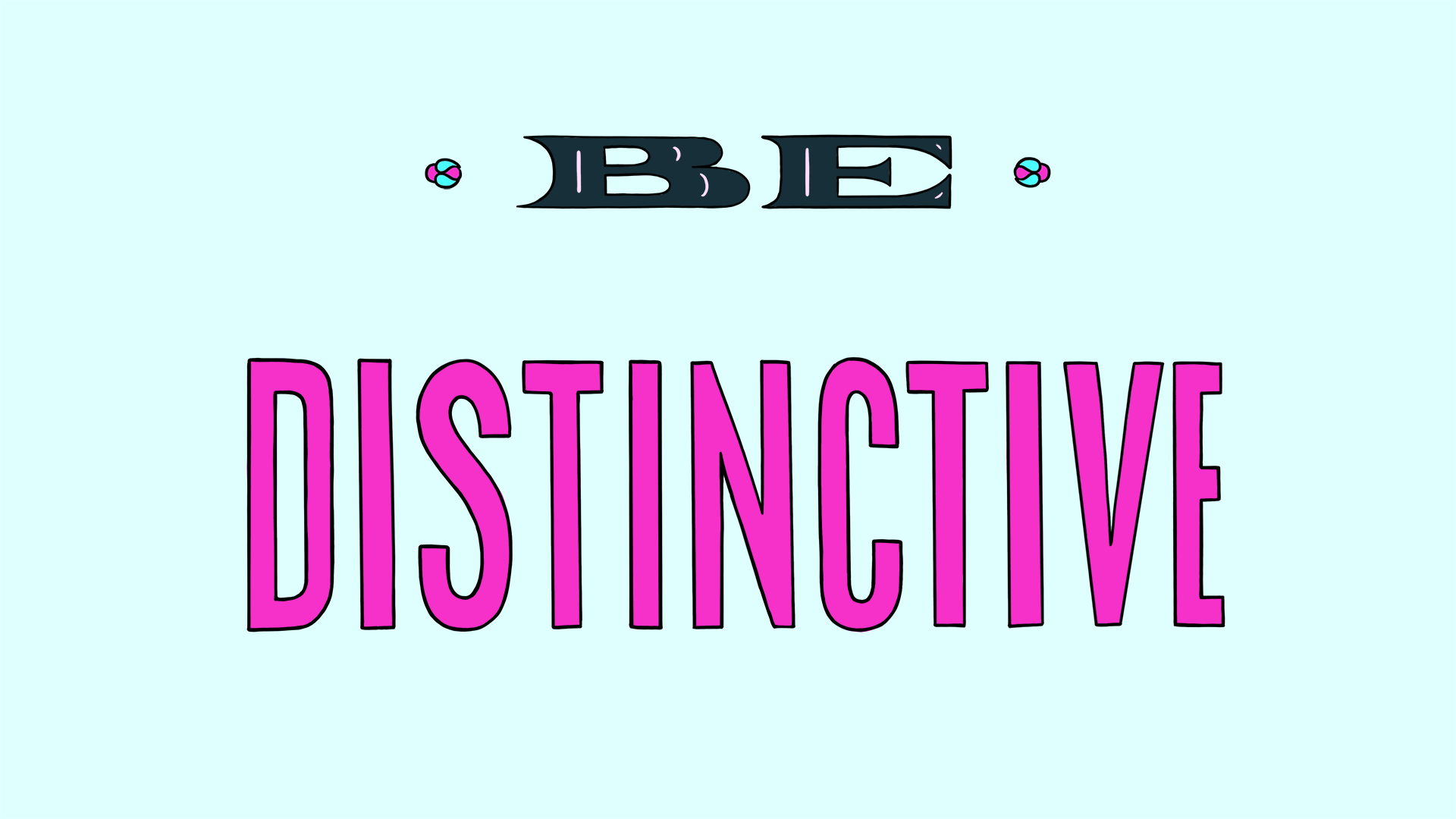
Here’s a cliché that is actually relevant: There’s a lot of noise out there.
With so many ads running in so many places, it can be hard to get noticed, much less be remembered. Your audience spends more time online than ever before, with their attention divided across different channels and media—each changing and evolving. If your ad is like all the others, it can fall into the faint hum of campaign oblivion.
So, what helps an ad stand out?
It can deliver something surprising: an unexpected music track, a fresh visual style or a solution to a customer pain point they didn’t realize existed. It can have a clear-cut point of view. It is something that has to surprise and delight your customers to capture and hold their attention.
Think of it this way: You have one chance to make a first and lasting impression on your potential customers.
Distinctive ads that appear within the appropriate context make customers stop and take notice. That gives you a window to communicate your brand’s message. Then engage them one-on-one, encouraging people to talk about your ad or products and spread the word, providing your brand with a powerful halo effect.
Being distinctive in action
What would you do if your Amazon package were delivered by a high-performance sports car? And what if the delivery person were one of the Grand Prix circuit’s top drivers? Talk about unexpected.
That’s the essence of Coca-Cola and McLaren F1 Racing’s “Driven to Deliver” campaign. The playful ads show what happens when Carlos Sainz and Lando Norris join forces to deliver Coke Zero Sugar around Austin, Texas.
And not only did they deliver the beverage to delighted customers, but the F1 drivers also enjoyed a couple of bottles themselves after a day of deliveries. Why is this important? The Kantar research for Amazon Ads discovered that 89% of top-performing grocery campaigns generate awareness by seamlessly integrating product shots into ads.
What Amazon Ads experts say
“The most important thing is for brands to be focused on really understanding their customers and to be honest with themselves about how many things are vying for their customers’ attention. [The creative] is likely competing with a second screen, a group text, 10 other open browser tabs.
“The bar for what it takes to drive true engagement is incredibly high and always rising, so creative ideas have to have real value, be very clear, show up at the right moment, and likely appear in more than one place before they really land.”
—Kate McCagg
Head of Brand Innovation Lab, Amazon Ads
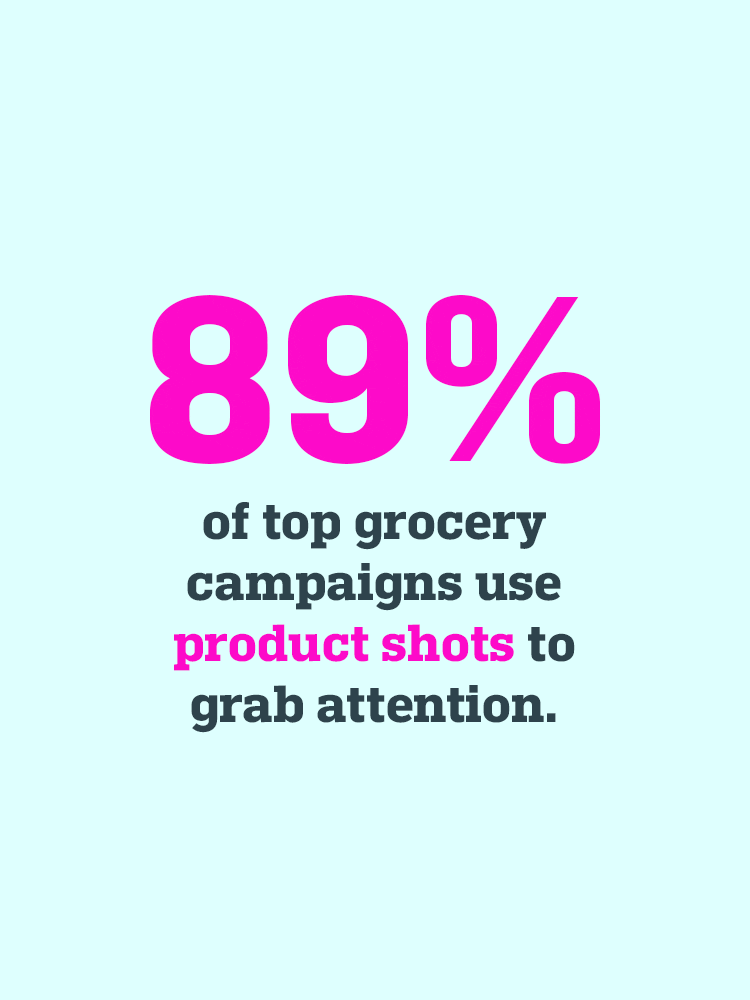
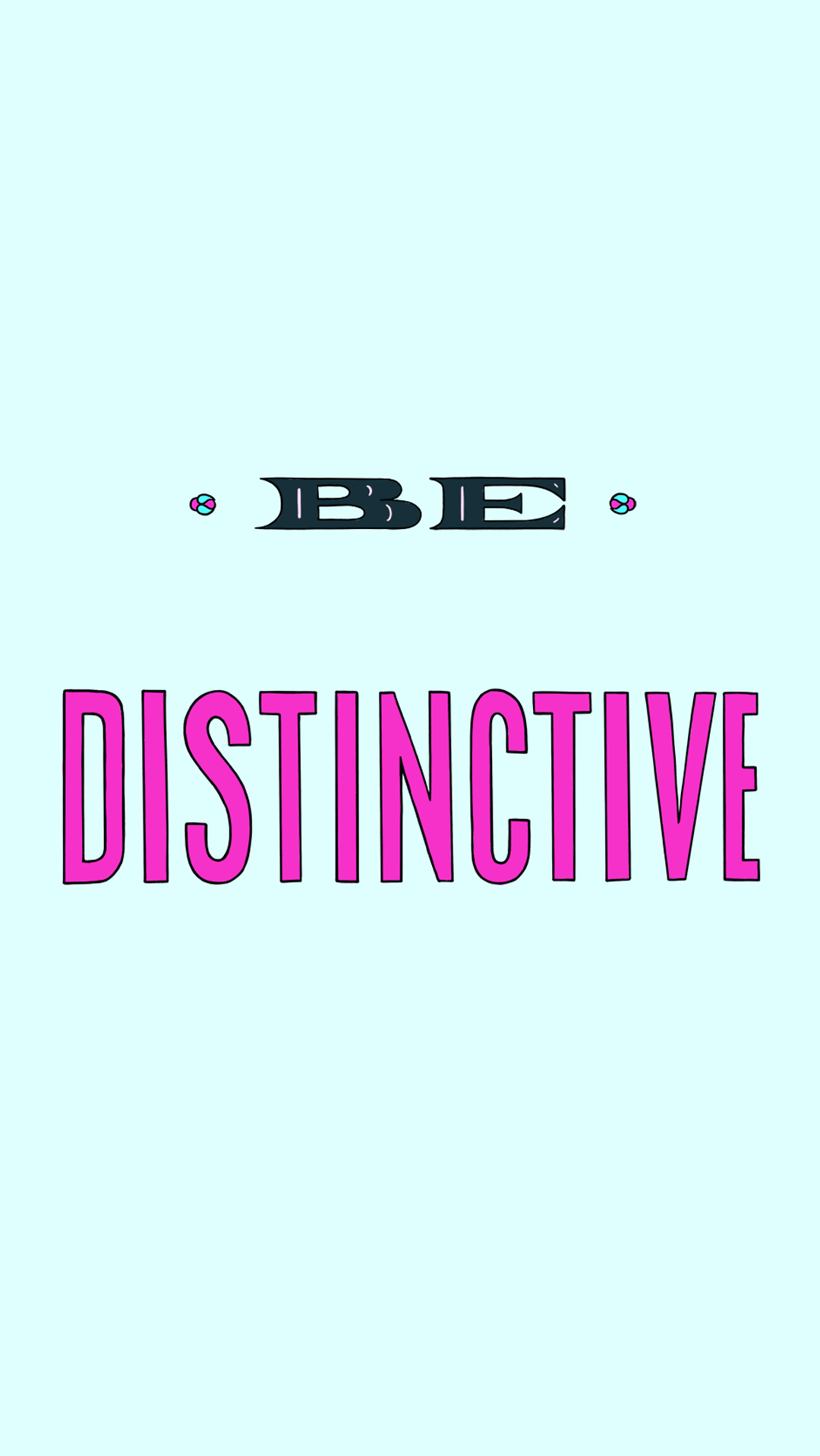
Here’s a cliché that is actually relevant: There’s a lot of noise out there.
With so many ads running in so many places, it can be hard to get noticed, much less be remembered. Your audience spends more time online than ever before, with their attention divided across different channels and media—each changing and evolving. If your ad is like all the others, it can fall into the faint hum of campaign oblivion.
So, what helps an ad stand out?
It can deliver something surprising: an unexpected music track, a fresh visual style or a solution to a customer pain point they didn’t realize existed. It can have a clear-cut point of view. It is something that has to surprise and delight your customers to capture and hold their attention.
Think of it this way: You have one chance to make a first and lasting impression on your potential customers.
Distinctive ads that appear within the appropriate context make customers stop and take notice. That gives you a window to communicate your brand’s message. Then engage them one-on-one, encouraging people to talk about your ad or products and spread the word, providing your brand with a powerful halo effect.
Being distinctive in action
What would you do if your Amazon package were delivered by a high-performance sports car? And what if the delivery person were one of the Grand Prix circuit’s top drivers? Talk about unexpected.
That’s the essence of Coca-Cola and McLaren F1 Racing’s “Driven to Deliver” campaign. The playful ads show what happens when Carlos Sainz and Lando Norris join forces to deliver Coke Zero Sugar around Austin, Texas.
And not only did they deliver the beverage to delighted customers, but the F1 drivers also enjoyed a couple of bottles themselves after a day of deliveries. Why is this important? The Kantar research for Amazon Ads discovered that 89% of top-performing grocery campaigns generate awareness by seamlessly integrating product shots into ads.
What Amazon Ads experts say
“The most important thing is for brands to be focused on really understanding their customers and to be honest with themselves about how many things are vying for their customers’ attention. [The creative] is likely competing with a second screen, a group text, 10 other open browser tabs.
“The bar for what it takes to drive true engagement is incredibly high and always rising, so creative ideas have to have real value, be very clear, show up at the right moment, and likely appear in more than one place before they really land.”
—Kate McCagg
Head of Brand Innovation Lab, Amazon Ads


In the Kantar analysis of Amazon Ads campaigns, the creative that generated the highest lifts in awareness and intent had prominent branding at some point in the ad. This creates a clear link between the distinct message of the ad and the brand itself. Then, when people see your message again, they immediately associate it with your brand and products.
To elevate your brand, you need to make sure that the attention garnered by your ad reflects positively on your brand, highlights its values and outlines what it can do for people. And that requires a clear idea of not only what your brand stands for, but also the qualities of your brand that resonate most with consumers.
So how can you do this? Start by building off your brand’s foundation—your vision, your mission, your brand values and what this all means for your customers. Then make sure that your advertising clearly articulates this. Beyond reinforcing your brand values in your messaging, be sure to listen to what consumers are saying. Analyze your mentions on social. Comb through product reviews. All of this ensures that your creative is both in service to your brand and in service to your customers.
Brand elevation in action
Is there anything more associated with Cheetos than fingers, lips, pants and everything else covered in orange Cheetle dust? Love it or hate it, the snack food brand has effectively embraced the brightly colored smudges as a differentiating feature of its product and inserted them into its ads.
According to the Kantar/Amazon Ads analysis, 63% of the top-performing grocery creatives grab attention and drive intent by building a story around the food, which is exactly what Cheetos did at SXSW. In March 2022, Amazon’s Alexa came to the rescue with a “Hands-Free House” that let people eat Cheetos without fear of leaving their orange fingerprints everywhere. The VR-enabled experience let visitors explore each room using smudge-free remote controls and Alexa-powered voice control. Perfect for applying to their own living situations.
What Amazon Ads experts say
“The most important first step is really understanding the one thing your brand stands for. Sometimes brands themselves can’t decide, so it can be up to [creative partners] to create ideas that ladder up and reinforce the brand’s true self in surprising ways.”
—Dustin Duke
Principal Creative Director, Brand Innovation Lab, Amazon Ads

In the Kantar analysis of Amazon Ads campaigns, the creative that generated the highest lifts in awareness and intent had prominent branding at some point in the ad. This creates a clear link between the distinct message of the ad and the brand itself. Then, when people see your message again, they immediately associate it with your brand and products.
To elevate your brand, you need to make sure that the attention garnered by your ad reflects positively on your brand, highlights its values and outlines what it can do for people. And that requires a clear idea of not only what your brand stands for, but also the qualities of your brand that resonate most with consumers.
So how can you do this? Start by building off your brand’s foundation—your vision, your mission, your brand values and what this all means for your customers. Then make sure that your advertising clearly articulates this. Beyond reinforcing your brand values in your messaging, be sure to listen to what consumers are saying. Analyze your mentions on social. Comb through product reviews. All of this ensures that your creative is both in service to your brand and in service to your customers.
Brand elevation in action
Is there anything more associated with Cheetos than fingers, lips, pants and everything else covered in orange Cheetle dust? Love it or hate it, the snack food brand has effectively embraced the brightly colored smudges as a differentiating feature of its product and inserted them into its ads.
According to the Kantar/Amazon Ads analysis, 63% of the top-performing grocery creatives grab attention and drive intent by building a story around the food, which is exactly what Cheetos did at SXSW. In March 2022, Amazon’s Alexa came to the rescue with a “Hands-Free House” that let people eat Cheetos without fear of leaving their orange fingerprints everywhere. The VR-enabled experience let visitors explore each room using smudge-free remote controls and Alexa-powered voice control. Perfect for applying to their own living situations.
What Amazon Ads experts say
“The most important first step is really understanding the one thing your brand stands for. Sometimes brands themselves can’t decide, so it can be up to [creative partners] to create ideas that ladder up and reinforce the brand’s true self in surprising ways.”
—Dustin Duke
Principal Creative Director, Brand Innovation Lab, Amazon Ads

Sometimes, being distinctive and well-branded can be enough to get your ad noticed.
But when it comes to building brand awareness and credibility, informing consumers about your products, growing your revenue or demonstrating value for premium pricing, you need to show how your brand fulfills consumers’ needs, while also illustrating how your solution and core values are unique.
Showing your value in action
Amazon’s home security company, Ring, aims to bring peace of mind to its customers. The brand connected to a cultural moment that not only resonated around home security, but also allowed the brand to join a trending conversation in a new space.
With the release of The Batman, Ring created Batman-themed Quick Replies, which are a feature that allows visitors to interact with the Ring doorbell—like an answering machine for the door. This marked the first time Ring partnered to create a custom Quick Reply. Across social media, hundreds of thousands of users shared videos of The Batman Quick Reply in action. The campaign even garnered larger media attention in publications like Apartment Therapy, Rolling Stone, The Guardian and more.
These kinds of innovative campaigns can help brands reach new audiences in creative and meaningful ways. Showing the reactions of people interacting with your brand’s product or service is valuable, as the Amazon Ads analysis found that 65% of top-performing campaigns across all categories feature people in the creative to drive intent.
What Amazon Ads experts say
“Bring to life what sets your brand apart and what unique benefits will resonate most with your audience. To execute this habit, home in on a specific core audience you’re looking to reach in a meaningful way. Ask yourself, ‘What excites them? How can your brand naturally meet their needs in a way that’s unique from the competitors and disrupt the category status quo?’ To be meaningfully different, you must take calculated risks to push the brand forward.”
—Heather Kehrberg
Director of Global Creative Success, Amazon Ads


Sometimes, being distinctive and well-branded can be enough to get your ad noticed.
But when it comes to building brand awareness and credibility, informing consumers about your products, growing your revenue or demonstrating value for premium pricing, you need to show how your brand fulfills consumers’ needs, while also illustrating how your solution and core values are unique.
Showing your value in action
Amazon’s home security company, Ring, aims to bring peace of mind to its customers. The brand connected to a cultural moment that not only resonated around home security, but also allowed the brand to join a trending conversation in a new space.
With the release of The Batman, Ring created Batman-themed Quick Replies, which are a feature that allows visitors to interact with the Ring doorbell—like an answering machine for the door. This marked the first time Ring partnered to create a custom Quick Reply. Across social media, hundreds of thousands of users shared videos of The Batman Quick Reply in action. The campaign even garnered larger media attention in publications like Apartment Therapy, Rolling Stone, The Guardian and more.
These kinds of innovative campaigns can help brands reach new audiences in creative and meaningful ways. Showing the reactions of people interacting with your brand’s product or service is valuable, as the Amazon Ads analysis found that 65% of top-performing campaigns across all categories feature people in the creative to drive intent.
What Amazon Ads experts say
“Bring to life what sets your brand apart and what unique benefits will resonate most with your audience. To execute this habit, home in on a specific core audience you’re looking to reach in a meaningful way. Ask yourself, ‘What excites them? How can your brand naturally meet their needs in a way that’s unique from the competitors and disrupt the category status quo?’ To be meaningfully different, you must take calculated risks to push the brand forward.”
—Heather Kehrberg
Director of Global Creative Success, Amazon Ads
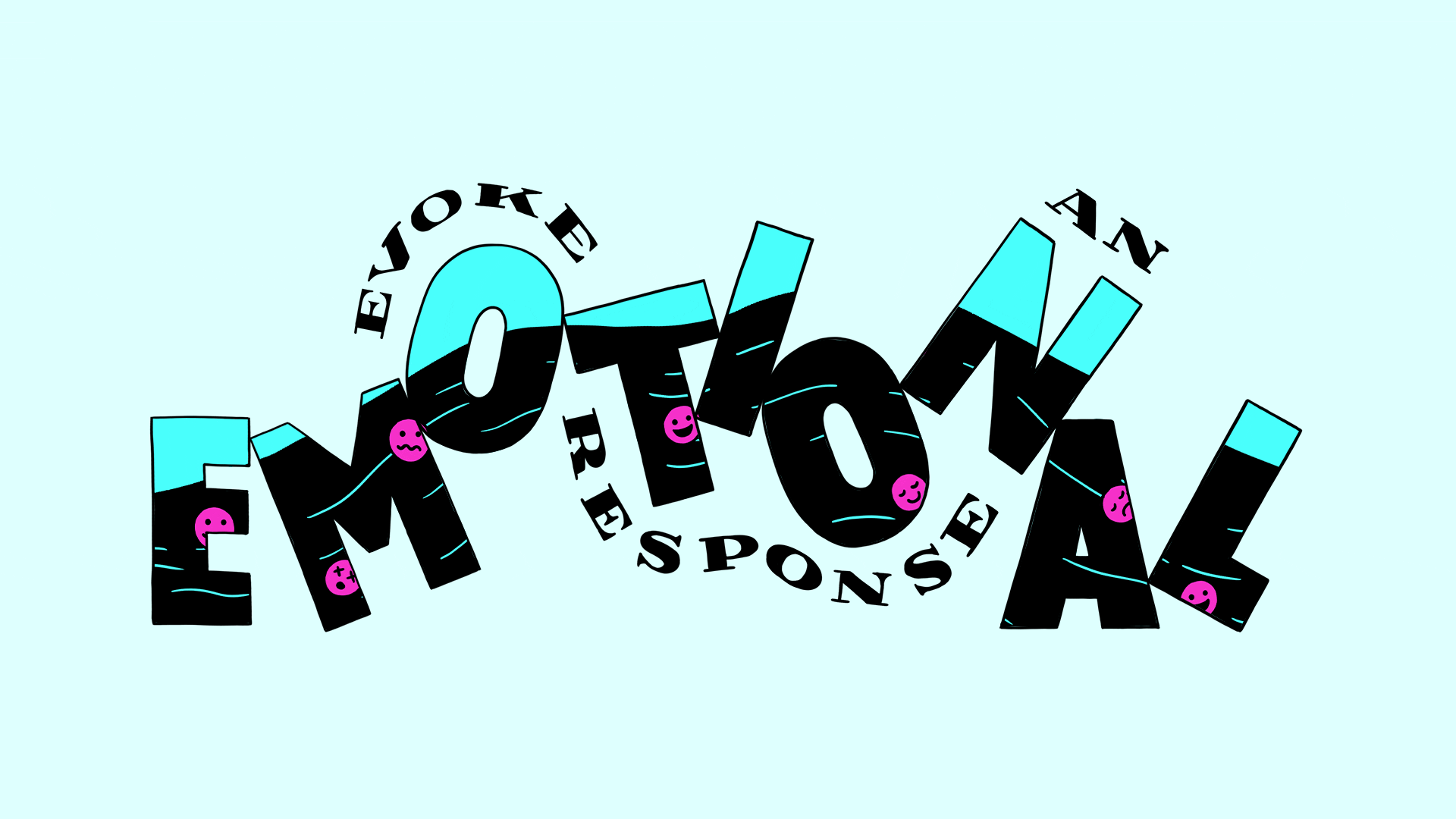
People are motivated not only by logic, but also by emotions. Good creative doesn’t appeal just to the head, but also to the heart or the gut. People feel before they think.
Effective ads elicit some kind of emotion from consumers and connect that emotion back to the brand or product. Holiday ads, for example, often play to the joy or nostalgia people feel that time of year.
Many successful ads make an emotional connection by using the voices of the communities the brand serves. These ads talk less about the product proposition, focusing more on consumers’ inspiration than conversion. When done with intention, emotional differentiation can relate what the audience is feeling back to the brand, sharing how the brand may seem caring, funny, famous, lovable or simply “for me.”
Emotional response in action
“Love Has No Labels” is a movement that promotes acceptance and inclusion of all people, across race, religion, gender, sexual orientation, age and ability. And the long-running campaign from the Ad Council inspires audiences to take meaningful action toward creating a more inclusive world.
A recent installment was inspired by the number of consumers who ask their Alexa-enabled device, “What is love?” In lieu of Alexa’s default answer, the prompt instead shared responses from real people giving their personal definition of love.
The campaign also featured a short documentary film and a 30-second ad, along with digital ads, that further compelled consumers to ask Alexa what love is—which they did three times more than they had prior to the campaign, per Amazon. Coupling display and video helps to enhance performance, as the Kantar analysis found that for campaigns that include video and display, brand awareness is 2 times higher than campaigns with display alone. Overall, 88% of top-performing campaigns across all categories feature video.
What Amazon Ads experts say
“Getting consumers to engage and act is more difficult than ever. But the brands I’ve seen be most successful have told a different side to a story or have made an issue relevant by reducing the barrier to taking action.
“Brands that put some skin in the game get more respect and engagement if they truly believe in the cause they are standing for.”
—Joseph Delhommer
Head of U.S. CPG & Grocery, Brand Innovation Lab, Amazon Ads
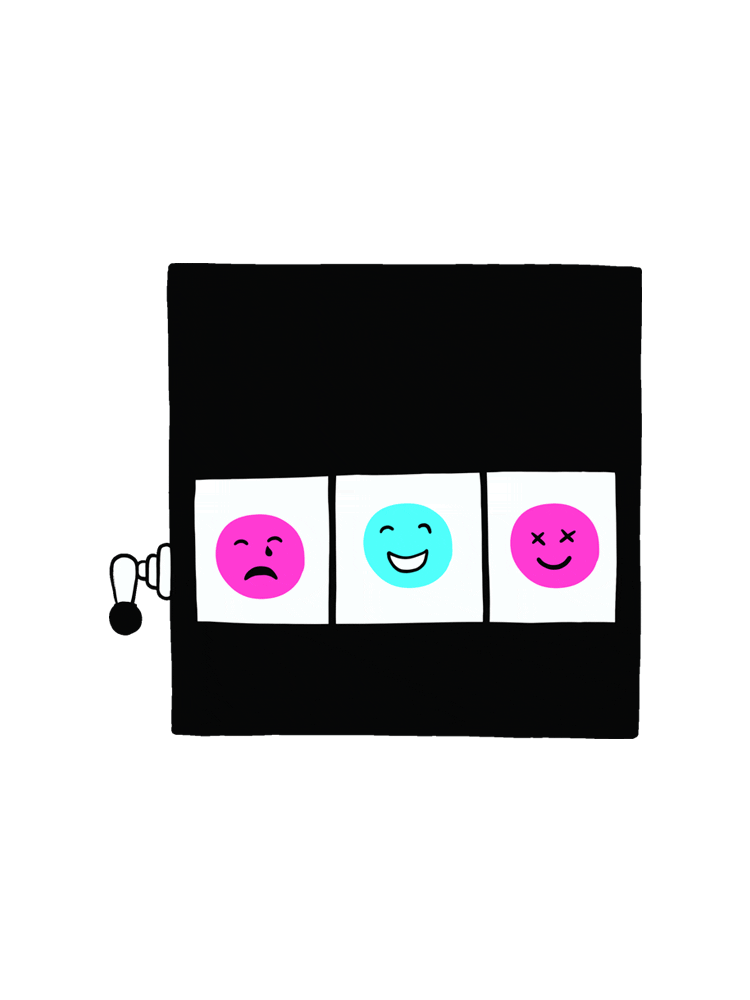

People are motivated not only by logic, but also by emotions. Good creative doesn’t appeal just to the head, but also to the heart or the gut. People feel before they think.
Effective ads elicit some kind of emotion from consumers and connect that emotion back to the brand or product. Holiday ads, for example, often play to the joy or nostalgia people feel that time of year.
Many successful ads make an emotional connection by using the voices of the communities the brand serves. These ads talk less about the product proposition, focusing more on consumers’ inspiration than conversion. When done with intention, emotional differentiation can relate what the audience is feeling back to the brand, sharing how the brand may seem caring, funny, famous, lovable or simply “for me.”
Emotional response in action
“Love Has No Labels” is a movement that promotes acceptance and inclusion of all people, across race, religion, gender, sexual orientation, age and ability. And the long-running campaign from the Ad Council inspires audiences to take meaningful action toward creating a more inclusive world.
A recent installment was inspired by the number of consumers who ask their Alexa-enabled device, “What is love?” In lieu of Alexa’s default answer, the prompt instead shared responses from real people giving their personal definition of love.
The campaign also featured a short documentary film and a 30-second ad, along with digital ads, that further compelled consumers to ask Alexa what love is—which they did three times more than they had prior to the campaign, per Amazon. Coupling display and video helps to enhance performance, as the Kantar analysis found that for campaigns that include video and display, brand awareness is 2 times higher than campaigns with display alone. Overall, 88% of top-performing campaigns across all categories feature video.
What Amazon Ads experts say
“Getting consumers to engage and act is more difficult than ever. But the brands I’ve seen be most successful have told a different side to a story or have made an issue relevant by reducing the barrier to taking action.
“Brands that put some skin in the game get more respect and engagement if they truly believe in the cause they are standing for.”
—Joseph Delhommer
Head of U.S. CPG & Grocery, Brand Innovation Lab, Amazon Ads

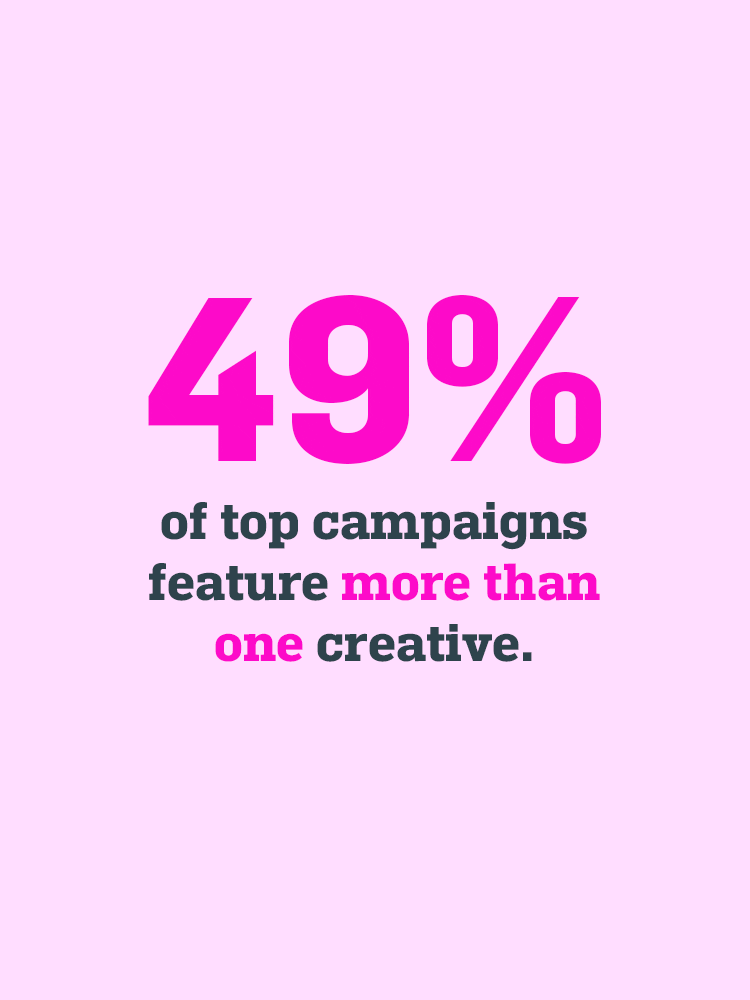
Your creative can’t be effective if you don’t know what customers actually want.
This can be a challenge for many marketers. They can become so focused on themselves and their brands that they lose sight of what resonates with their audience. They end up producing messages that communicate their brand story but don’t necessarily engage customers, which negates effectiveness.
The truth is, you can’t embrace the first four habits without executing this one. Every campaign needs to be tested to ensure it delivers in terms of distinctiveness, branding, showing value and evoking emotion.
Getting consumer input is not a onetime event; it requires a process of initial engagement, listening and follow-up. The strongest brands test throughout the creative development process.
They start by putting consumers’ needs first when developing ads. For top-performing automotive creative in the Kantar/Amazon Ads analysis, 47% provide critical information that consumers regularly seek out when considering a new vehicle, such as safety features, awards won and interior images. And 77% of top-performing hospitality creative spotlights how the brand can help consumers learn more information and consider the service in the future.
Brands also test to see what resonates with the audience, comparing different combinations of creative elements within an ad, such as imagery and messaging. For example, according to the Kantar analysis, multichannel campaigns with multiple creative variations can be very impactful; in fact, 49% of top-performing campaigns across categories feature more than one creative. That said, it’s critical that messaging is consistent—because too many messages within the same campaign can dilute retention—and creative needs to be customized for each channel.
They also A/B-test call-to-action copy or split-test a landing page. Once live, brands track metrics closely to optimize creative performance. They use qualitative testing to understand what prospective customers think. They use social listening to find out what people are talking about on social networks.
In the digital world, there are endless opportunities to test and learn. Don’t be afraid of feedback.
What Amazon Ads experts say
“Taking in customer feedback is not always easy. It’s clear that temporary solutions seldom work but setting a long-term plan and taking steps to act on it does earn customer trust. We are lucky to be in a time where we can test and optimize creative, and easily swap out work that isn’t performing well. But having the capability to do so doesn’t negate the necessity to address the core issue customers highlighted in the first place.”
—Joseph Delhommer
Head of U.S. CPG & Grocery, Brand Innovation Lab, Amazon Ads

Your creative can’t be effective if you don’t know what customers actually want.
This can be a challenge for many marketers. They can become so focused on themselves and their brands that they lose sight of what resonates with their audience. They end up producing messages that communicate their brand story but don’t necessarily engage customers, which negates effectiveness.
The truth is, you can’t embrace the first four habits without executing this one. Every campaign needs to be tested to ensure it delivers in terms of distinctiveness, branding, showing value and evoking emotion.
Getting consumer input is not a onetime event; it requires a process of initial engagement, listening and follow-up. The strongest brands test throughout the creative development process.
They start by putting consumers’ needs first when developing ads. For top-performing automotive creative in the Kantar/Amazon Ads analysis, 47% provide critical information that consumers regularly seek out when considering a new vehicle, such as safety features, awards won and interior images. And 77% of top-performing hospitality creative spotlights how the brand can help consumers learn more information and consider the service in the future.
Brands also test to see what resonates with the audience, comparing different combinations of creative elements within an ad, such as imagery and messaging. For example, according to the Kantar analysis, multichannel campaigns with multiple creative variations can be very impactful; in fact, 49% of top-performing campaigns across categories feature more than one creative. That said, it’s critical that messaging is consistent—because too many messages within the same campaign can dilute retention—and creative needs to be customized for each channel.
They also A/B-test call-to-action copy or split-test a landing page. Once live, brands track metrics closely to optimize creative performance. They use qualitative testing to understand what prospective customers think. They use social listening to find out what people are talking about on social networks.
In the digital world, there are endless opportunities to test and learn. Don’t be afraid of feedback.
What Amazon Ads experts say
“Taking in customer feedback is not always easy. It’s clear that temporary solutions seldom work but setting a long-term plan and taking steps to act on it does earn customer trust. We are lucky to be in a time where we can test and optimize creative, and easily swap out work that isn’t performing well. But having the capability to do so doesn’t negate the necessity to address the core issue customers highlighted in the first place.”
—Joseph Delhommer
Head of U.S. CPG & Grocery, Brand Innovation Lab, Amazon Ads
About Amazon Ads
Amazon Ads helps brands design ad experiences that delight customers and deliver meaningful business results. With hundreds of millions of global active customer accounts, and first-party insights into shopping, streaming and browsing, brands can craft relevant campaigns that enhance the customer experience. Solutions on Amazon.com; services like Twitch, Freevee, Alexa, Amazon Music’s ad-supported tier; and collaborations with third-party publishers and exchanges make Amazon Ads an amplifier for brands to reach the right audiences in the right places, both on and off Amazon.
Illustrations by Laurène Boglio
About Amazon Ads
Amazon Ads helps brands design ad experiences that delight customers and deliver meaningful business results. With hundreds of millions of global active customer accounts, and first-party insights into shopping, streaming and browsing, brands can craft relevant campaigns that enhance the customer experience. Solutions on Amazon.com; services like Twitch, Freevee, Alexa, Amazon Music’s ad-supported tier; and collaborations with third-party publishers and exchanges make Amazon Ads an amplifier for brands to reach the right audiences in the right places, both on and off Amazon.
Illustrations by Laurène Boglio


 Built with Shorthand
Built with Shorthand





